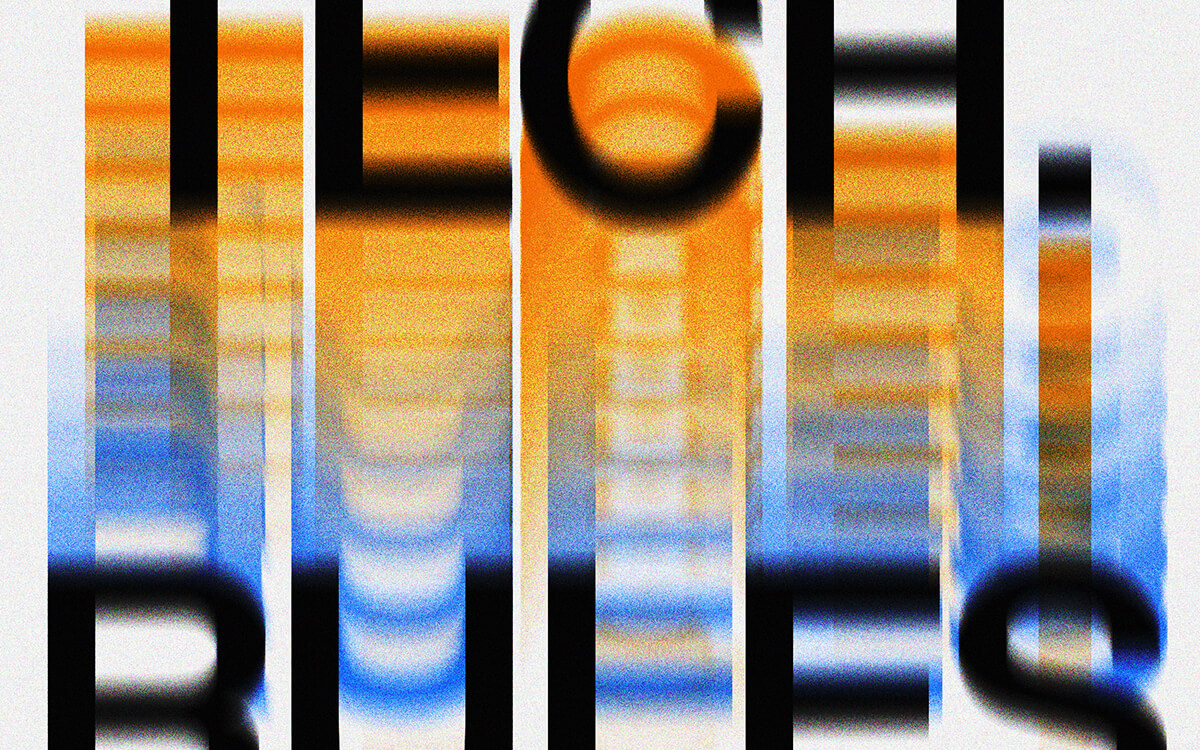September 25, 2025
Many urgently needed technology-based goods and services that could improve the human condition are under-funded and thus under-produced in our current economic system.
Factors that Contribute to Projects Being Unfundable
There are myriad factors that can contribute to individual projects being deemed unfundable:
Lack of Scientific Knowledge
If the science underlying a potential treatment, cure or preventative measure is not well understood, it is less likely to attract funding. Entrepreneurs and investors carefully consider the probability of success when deciding whether to invest time and money into a project, and projects based on poorly understood science are of course considered high risk.
Misalignment of Research and Commercial Incentives
Many science and technology-based companies originate in universities or government labs but struggle to secure private funding after initial research grants expire. The misalignment between research incentives and commercialization goals, along with restrictive technology transfer agreements, can hinder the flow of capital to promising innovations.
Regulatory Risk and Uncertainty
Uncertainty surrounding the regulatory approval process, especially concerning safety and efficacy requirements, can deter investment in drugd samnf medical devices. Payers often hesitate to cover preventive services due to difficulties in demonstrating their future value and the lack of immediate financial benefits.
Financial Return Concerns
Some sectors, despite their potential societal benefits, may not offer the financial return profiles or clear exit strategies that attract venture capitalists. Technology-based companies frequently need significant funding early in their development for research, prototyping, and pilot projects. This front-loaded capital requirement can deter traditional investors who favor shorter investment horizons and quicker returns. This can be exacerbated when there is a lack of previous successful exits in a sector, making it difficult to assess potential returns.
Limited Funding Sources
Technologies in their early stages, particularly those that haven't crossed the “valley of death” between basic research and commercial viability, often face funding challenges. Traditional venture capitalists and even angel investors often view such projects as excessively risky. This is compounded by decreasing federal research funding and healthcare reforms that constrain hospital research budgets.
Long Development Timelines and High Capital Requirements
Ventures characterized by complex scientific and technology foundations typically require significant capital and lengthy development timelines. This mismatch between the time-to-market and the preferred investment horizons of traditional asset managers (typically on the order of three to seven years) creates a funding gap.
Lack of Scale-Up Funding
Certain applications require substantial investment to build the first instance of their technology at scale. The absence of funding mechanisms for "first of a kind” project finance creates a major obstacle to scaling up and demonstrating the viability of deep tech innovations.
Past Failures and Negative Perceptions
The relatively high rate of failure seen in complex scientific and technology-based ventures leads to high rates of investor skepticism. This challenge can be particularly acute in areas that have been through previous boom-and-bust cycles such as clean tech.
Corporate Risk Aversion
Corporations, despite possessing significant resources and potential expertise, often prioritize improving existing solutions rather than pursuing radical innovations.
Alternative Financing Approaches
Despite all these challenges, it is important to note that the concept of “unfundable” is not absolute. Projects deemed unfundable in one context or time period may become fundable as scientific knowledge advances, regulations evolve, and investor preferences change.
In addition to traditional venture capital, there are a range of existing alternative financing approaches for science and technology-based innovations. These alternatives aim to address the specific challenges and funding gaps:
Venture Debt
This approach offers debt financing to venture capital-backed companies, even those lacking positive cash flow or substantial assets for collateral. Venture debt can be structured as:
Growth Capital
Term loans to supplement or replace equity rounds, fund mergers and acquisitions, or provide working capital.
Accounts Receivable Financing
Allows companies to borrow against outstanding invoices, helpful for businesses with predictable revenue streams.
Equipment Financing
Leases for purchasing necessary equipment, particularly relevant for companies with high capital expenditure needs.
Venture debt can extend a company's runway, enabling them to reach critical milestones, achieve profitability, or navigate unexpected delays.
Public and Philanthropic Funding
Public and philanthropic funders typically are driven more by “mission” than they are by “margin.” But increasingly in today’s funding climate, groups are keen to undertstand some path to long term sustainability for technologies and organizations they support. Examples of these funders include:
Disease-Specific Foundations and Philanthropists
Entities like the Cystic Fibrosis Foundation and the Leukemia & Lymphoma Society alongside private foundations and individual philanthropists, can provide funding for early-stage medical innovations aligned with their missions.
State and Federal Programs
Initiatives like Pennsylvania's Ben Franklin Technology Partners, the Ohio Third Frontier, and federal SBIR and STTR programs offer grants and funding opportunities for translational research and early-stage ventures.
“Philanthropic Angel Funds”
These funds, backed by individuals with both a financial and personal interest in a technology's medical applications, can provide seed funding for projects struggling to attract conventional investors.
Institutional Seed and Innovation Funds
Recognizing the limitations of relying solely on clinical revenue, institutions are increasingly establishing dedicated funds to support early-stage projects and bridge the gap to external funding.
Business Incubation Facilities
Organizations that provide entrepreneurs with space, equipment, and mentorship to transition from concept to reality, often with financial support from the community and partnering institutions.
State-Level Commercialization Institutes
Organizations like the Florida Institute for the Commercialization of Florida Technology assist with company formation, showcase innovation, and offer seed funding through programs like the Seed Capital Accelerator Program.
University-Specific Initiatives
Universities like Johns Hopkins establish programs and facilities, such as the Science+Technology Park, to foster the growth of new businesses based on their intellectual property.
Translational Funding Programs
These programs, often supported by foundations or state initiatives, bridge the gap between research and commercialization. The Johns Hopkins-Coulter Translational Partnership is one example of such programs.
Other Alternative Financing Mechanisms
Some other less common financing mechanisms include:
Outcome-Based Financing and Risk Sharing
These approaches link payment for a technology or service to the achievement of pre-defined outcomes. Examples include:
• Coverage as Part of a Clinical Study: Payers provide interim funding for a technology's use within a clinical trial, generating data to reduce decision-making uncertainties.
• Coverage with Outcomes Guarantee: Payers and manufacturers enter contractual arrangements where payment is contingent upon achieving pre-agreed health or financial outcomes. This can involve various mechanisms such as rebates for non-achievers, tiered pricing based on outcomes, or cost-effectiveness guarantees.
Crowdfunding
Platforms that allow individuals to contribute small amounts of capital to support a venture. This approach can be particularly valuable for very early-stage projects or those with a strong social mission.
Revenue-Based Financing
Investors provide capital in exchange for a percentage of future revenues. This model aligns investor incentives with the company's growth and can be more attractive to companies that prefer to avoid equity dilution.
The various alternatives described above highlight the importance of considering the specific needs and context of each venture when evaluating alternative financing approaches. Factors such as stage of development, technology risk, market readiness, and investor preference all play a role in determining the most suitable financing strategy.
To learn more about our work related to funding the unfundable, please visit the Finance Lab at Digitalis Research.
– Geoffrey W. Smith
First Five
First Five is our curated list of articles, studies, publications, and other things of interest for the month.
1/ Unfundable #1: Women’s Health
The NIH spends proportionally LESS studying women's health today than in 2013.
Read more here>
2/ Unfundable #2: Healthcare for the Poor
“Among low-income individuals, how does a cash benefit affect use of the emergency department and outpatient care? In this study of 2880 randomized participants, there were significantly fewer emergency department visits among those assigned to receive a monthly cash benefit compared with the control group (217.1 vs 317.5 emergency department visits per 1000 persons), including fewer emergency department visits leading to hospital admission and fewer emergency department visits related to behavioral health and substance use.”
Read more here >
3/ Unfundable #3: Public Goods
“We propose a design for philanthropic or publicly-funded seeding to allow (near) optimal provision of a decentralized, self-organizing ecosystem of public goods.”
Read more here >
And for an alternative point of view on this design idea, read more here >
4/ Unfundable #4: Vaccines
“Advance Market Commitments allow us to buy technology from the future to support its development: vaccines, carbon capture technology, and even spacecraft. Here’s how you can start your own.”
Read more here >
5/ Unfundable #5: Research & Development
A web portal by the team at Convergent Research that explores “the landscape of R&D gaps holding back science and the bridge-scale fundamental development efforts that might allow humanity to solve them. To illustrate this, we’ve created a dataset showing the relationships between the following:
• R&D Gaps: we’ve focused on “fundamental development” gaps that may need coordinated research programs to solve by building a mid-sized piece of infrastructure.
• Foundational Capabilities: tools, technologies, data (mid-sized science infrastructure) that could fill the related R&D gap
• Resources: for each foundational capability, the initiatives and organizations working toward it; relevant research papers, roadmaps, and technology seeds; and ideas (proposals, whitepapers, essays, etc.) illustrating the capability.”
Read more here >
Did You Know?
In this section of our newsletter, we seek to demystify common terms and practices in our work as investors.
Angel Funding vs. Venture Funding
Angel investors are high net worth individuals who invest their own money into startup ventures, whereas venture capital investors are employed by a risk capital company (where they invest other people’s money).Angel investors are generally more likely to place a big bet on a startup with an interesting idea, whereas a VC firm will want to see growth potential prior to investing.
Typically, VC firms will invest a larger amount of money compared to angel investors, but VC investors will also get a higher equity stake in the company. The largest distinction between angel investors and venture investors is that VC firms may demand that they have some level of operational control, whereas angel investors prefer to be passive investors.
– Haiming Chen & Dylan Henderson
To subscribe to Engineering Biology by Jacob Oppenheim, and receive newly published articles via email, please enter your email address below.







